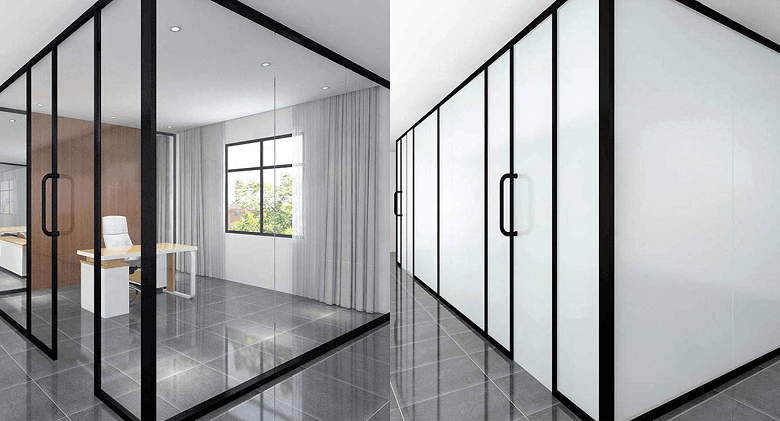Smart Glass: Revolutionizing Modern Technology & Design

Smart glass, also known as switchable glass or dynamic glass, is one of the most exciting technological innovations of the 21st century. Unlike traditional glass, which stays clear or opaque, This glass can change its properties in response to external stimuli such as electricity, light, or heat. It can switch between transparent, translucent, and opaque states, offering enhanced control over light, temperature, and privacy.
In recent years, this versatile material has gained significant attention due to its potential in architecture, automotive, and consumer electronics. This article dives deep into what This glass is, its types, benefits, applications, and how it works.
What Is Smart Glass?
Smart glass is a type of glazing material that changes its optical properties—such as light transmission or transparency—when stimulated by electrical voltage, light, heat, or pressure. It is commonly used in windows, skylights, and other architectural elements but is also finding its way into automotive and consumer electronics.
Smart glass works by altering its chemical or physical structure to respond to external conditions. The primary function of This glass is to allow the user to control the amount of light, heat, or visibility that enters a room, vehicle, or device. Depending on the specific type of This glass, it can transition from clear to frosted or from transparent to tinted.
Types of Smart Glass

Smart glass can be divided into several categories based on how it operates. Each type has unique characteristics and applications. Here are the most common types of This glass:
Electrochromic Glass
Electrochromic glass uses a small electric current to change the color or opacity of the glass. It is commonly used in automotive and architectural applications to control the amount of sunlight entering a space or vehicle.
- How it works: An electric charge is applied to thin metal oxide layers, causing them to change color or opacity.
- Applications: Windows in cars, homes, office buildings, and aircraft windows.
PDLC (Polymer Dispersed Liquid Crystal) Glass
PDLC This glass consists of liquid crystals suspended in a polymer matrix. When an electrical current is applied, the liquid crystals align, making the glass transparent. When the current is off, the crystals scatter, turning the glass opaque.
- How it works: PDLC glass is transparent when energized and opaque when the power is off.
- Applications: Office partitions, private meeting rooms, smart windows.
Suspended Particle Device (SPD) Glass
SPD This glass uses a special suspension of microscopic particles that align when an electric current is applied. This alignment controls the transparency of the glass.
- How it works: When power is applied, the particles align, making the glass more transparent; when off, the particles scatter, darkening the glass.
- Applications: Skylights, windows in offices, privacy windows in homes.
Thermochromic Glass
Thermochromic glass changes its opacity based on temperature. As the temperature rises, the glass darkens to reduce heat transmission and glare.
- How it works: Temperature-sensitive molecules inside the glass change color or opacity as the temperature increases.
- Applications: Windows in buildings, solar control systems, and vehicles.
Photochromic Glass
Photochromic This glass changes color in response to UV light. The glass darkens when exposed to sunlight and clears up when the sunlight is reduced.
- How it works: UV light activates special molecules in the glass that cause the glass to darken.
- Applications: Eyewear, windows in homes, and buildings.
How Smart Glass Works
The working mechanism of This glass depends on the type, but the core principle is that it can switch between various states of transparency. Here’s how the different types of This glass operate:
| Type of Smart Glass | How It Works | Applications |
| Electrochromic Glass | Voltage is applied to thin layers of metal oxide, altering color/opacity. | Architectural windows, automotive glass |
| PDLC Glass | Liquid crystals are suspended in polymer and align with electric current. | Office partitions, privacy windows |
| SPD Glass | Microscopic particles align in response to electric current. | Skylights, smart windows |
| Thermochromic Glass | Glass darkens as temperature rises to reduce heat. | Solar control systems, windows |
| Photochromic Glass | Glass darkens when exposed to UV light and lightens when UV is reduced. | Eyewear, building windows |
Benefits of Smart Glass
Smart glass offers several key benefits that have revolutionized how we design buildings, vehicles, and even consumer products. Let’s explore some of the top advantages of using This glass.
Energy Efficiency
One of the biggest benefits of smart glass is its ability to regulate sunlight, thus reducing the need for heating, cooling, and artificial lighting. By controlling the amount of heat and light entering a building or vehicle, it helps maintain a comfortable temperature and reduce energy consumption.
- Example: In a commercial office building, smart glass windows can automatically tint in response to sunlight, keeping the interior cool and reducing air conditioning costs.
Privacy Control
Smart glass can instantly provide privacy at the push of a button. For offices, homes, or healthcare facilities, where privacy is crucial, switchable glass can turn transparent spaces into private zones with just a flick of a switch.
- Example: In a corporate setting, glass partitions in meeting rooms can be turned opaque to prevent outsiders from peeking in.
UV Protection
Photochromic and electrochromic glass block harmful UV rays that can cause fading of furniture and flooring. This makes smart glass an excellent choice for locations that are exposed to constant sunlight.
Aesthetic Appeal
Smart glass has a sleek, modern look that is aesthetically pleasing. The ability to switch between opaque and transparent also offers design flexibility, making it an attractive option for architects and interior designers.
Safety and Security
Smart glass can improve safety and security by providing both privacy and the ability to block visibility into a building or vehicle, which is especially useful for high-security environments.
Applications of Smart Glass
Smart glass is used in various industries, from architecture to automotive. Here are some notable applications:
Architecture and Building Design
Smart glass is increasingly being used in buildings for windows, skylights, and facades. It helps reduce energy costs by blocking out excess heat from the sun while still allowing natural light into the room. It also enables users to switch from transparent to opaque glass for privacy and security.
Automotive Industry
In the automotive sector, smart glass is used in windows and sunroofs to control glare and improve the comfort of the passengers. For example, some cars now have electrochromic glass that automatically adjusts the tint based on sunlight exposure.
Consumer Electronics
Smart glass is making its way into consumer electronics, especially in the form of smart windows and displays. These glass products are often used in devices such as smart mirrors, interactive displays, and wearable devices like smart glasses.
Healthcare
In healthcare settings, smart glass is used for privacy and comfort. It’s used in private rooms, operating rooms, and offices, allowing the room to transition from transparent to opaque at the push of a button.
Aerospace
In the aviation industry, smart glass is used for aircraft windows to improve passenger comfort by reducing glare and controlling heat. Some airlines have started using electrochromic windows, which passengers can control to adjust the tint.
Frequently Asked Questions (FAQs)
- Is smart glass expensive? This glass can be more expensive than traditional glass due to its complex technology and manufacturing processes. However, the cost has been decreasing over time as demand grows and production scales up. The long-term energy savings and privacy benefits often outweigh the initial investment.
- How does smart glass help with energy savings? This glass helps with energy savings by automatically adjusting to temperature and light conditions. It can block excess sunlight and heat, reducing the need for air conditioning or heating, which cuts down on energy consumption and lowers utility bills.
- Can I install smart glass in existing buildings? Yes, This glass can be retrofitted into existing buildings. However, installation may be more complex and costly than installing it in new constructions. Specialized professionals are required to handle the installation process.
- How durable is smart glass? This glass is generally very durable, but its lifespan depends on the type and application. Proper maintenance and care are necessary to ensure optimal performance, especially for electrochromic and SPD glass.
- How do I clean This glass? Cleaning This glass is similar to cleaning regular glass. It’s important to use non-abrasive cleaning materials to avoid damaging the coating or electrical components.
Conclusion: The Future of Smart Glass
Smart glass is transforming how we interact with our surroundings. With its ability to offer privacy, energy efficiency, and aesthetic appeal, it’s no surprise that This glass is gaining popularity across multiple industries. As technology continues to improve, we can expect even more advanced applications and even greater integration into our daily lives. Whether you’re building a new home, designing a high-tech office, or upgrading your car, This glass provides a versatile solution for modern living.
Smart glass is indeed a glimpse into the future—a world where we can control our environment with the touch of a button, making our spaces more comfortable, sustainable, and secure.



